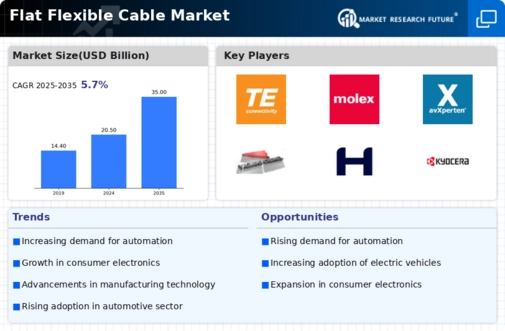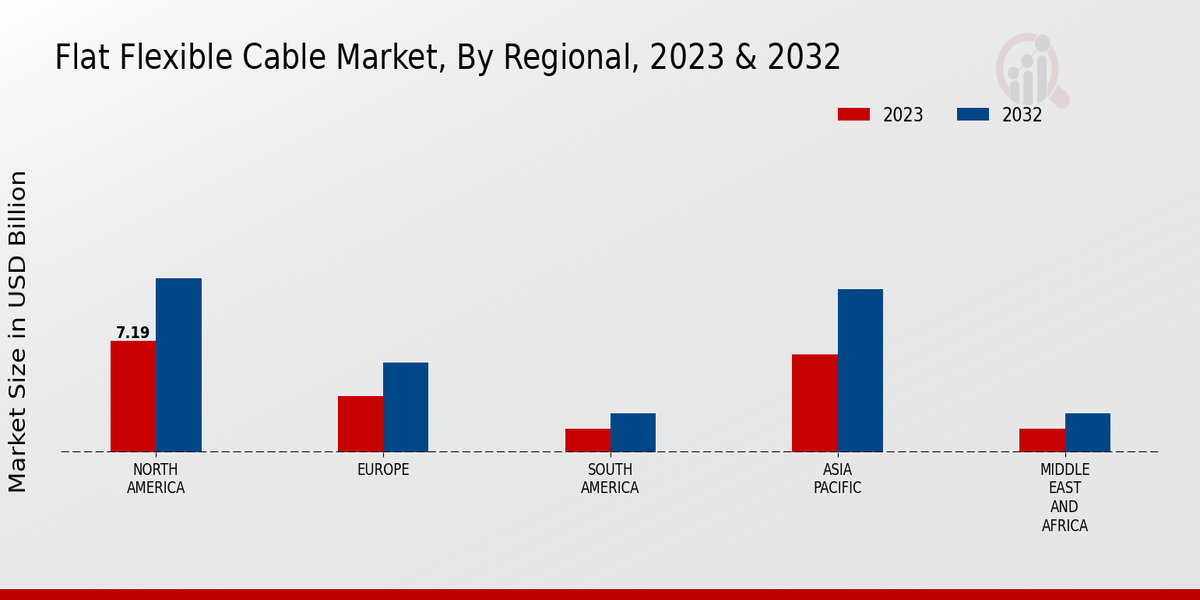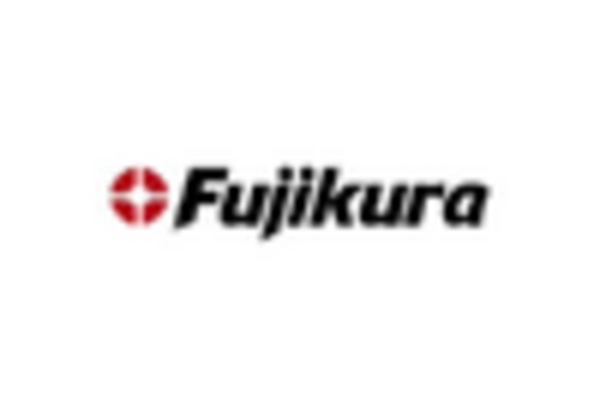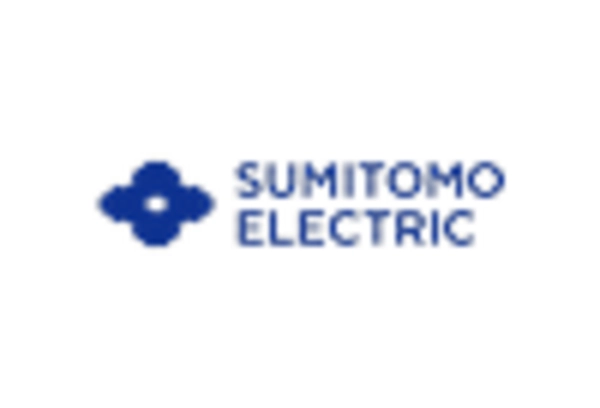Automotive Industry Innovations
The Flat Flexible Cable Market is significantly influenced by innovations within the automotive sector. With the rise of electric vehicles and advanced driver-assistance systems, the demand for lightweight and flexible wiring solutions is increasing. The automotive industry is projected to invest over 300 billion USD in electric vehicle technology by 2025, creating a substantial market for flat flexible cables. These cables are essential for connecting various electronic components, including sensors and control units, while ensuring optimal performance and safety. As automotive manufacturers strive to enhance vehicle efficiency and functionality, the Flat Flexible Cable Market is poised to benefit from this trend, potentially leading to new applications and increased market share.
Growth in Industrial Automation
The Flat Flexible Cable Market is poised for growth due to the rising trend of industrial automation. As industries increasingly adopt automation technologies, the need for reliable and efficient interconnect solutions becomes paramount. The Flat Flexible Cable Market is expected to exceed 200 billion USD by 2025, with flat flexible cables serving as a vital component in robotic systems and automated machinery. These cables facilitate seamless communication between various devices, enhancing operational efficiency and reducing downtime. The versatility and adaptability of flat flexible cables make them suitable for diverse industrial applications, thereby driving their demand in the Flat Flexible Cable Market. This trend indicates a promising future for manufacturers and suppliers in this sector.
Rising Demand in Consumer Electronics
The Flat Flexible Cable Market is experiencing a surge in demand driven by the increasing adoption of consumer electronics. As devices become more compact and feature-rich, manufacturers are seeking efficient interconnect solutions. The market for consumer electronics is projected to reach approximately 1 trillion USD by 2025, with flat flexible cables playing a crucial role in enhancing device performance. This trend is particularly evident in smartphones, tablets, and wearables, where space constraints necessitate the use of flexible cabling solutions. The ability of flat flexible cables to provide reliable connections while minimizing space usage positions them as a preferred choice among manufacturers. As consumer preferences shift towards more advanced and compact devices, the Flat Flexible Cable Market is likely to witness sustained growth.
Emerging Applications in Medical Devices
The Flat Flexible Cable Market is witnessing growth due to emerging applications in the medical device sector. As healthcare technology advances, the demand for compact and reliable interconnect solutions is increasing. The medical device market is projected to reach approximately 500 billion USD by 2025, with flat flexible cables being integral to various devices such as imaging systems and diagnostic equipment. These cables provide the necessary flexibility and reliability required in medical applications, where performance is critical. The ongoing innovation in medical technology indicates a growing reliance on flat flexible cables, thereby enhancing their significance in the Flat Flexible Cable Market. This trend may lead to new opportunities for manufacturers and suppliers in the healthcare sector.
Telecommunications Infrastructure Expansion
The Flat Flexible Cable Market is benefiting from the expansion of telecommunications infrastructure. As the demand for high-speed internet and advanced communication systems grows, the need for efficient cabling solutions becomes critical. Investments in telecommunications infrastructure are projected to reach over 100 billion USD by 2025, with flat flexible cables playing a key role in connecting various network components. These cables offer advantages such as reduced weight and improved flexibility, making them ideal for complex installations. The ongoing development of 5G networks further amplifies the demand for flat flexible cables, as they are essential for ensuring reliable connections in high-frequency applications. This trend suggests a robust growth trajectory for the Flat Flexible Cable Market.



















Leave a Comment